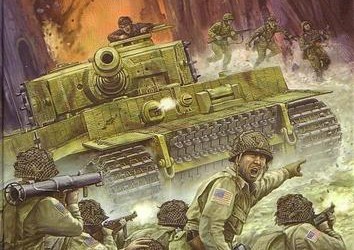By Fred Manzo
Flames of War: The World War II Miniatures Game
– Overview –
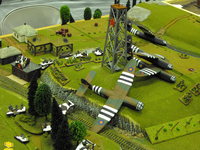 Many players consider Flames of War to be an above average miniatures system for World War II skirmish-level combat. But, unfortunately, for those with an eye towards elegance and historical accuracy it does have problems.
Many players consider Flames of War to be an above average miniatures system for World War II skirmish-level combat. But, unfortunately, for those with an eye towards elegance and historical accuracy it does have problems.
Basically, it suffers from a number of somewhat fiddly bits. That is, unnecessarily complex and/or unrealistic rules that seem to have been added solely for marketing purposes. Take, for example, “save rolls”. Now, I’m not a big fan of the “save” die rolls in this game as there doesn’t seem to be any good reason for them. Say, for instance, that weapon “A” can be depended upon to hit 60 percent of the time. Therefore, in a D6 system, like we have here, we can say it succeeds on a die roll of 1 through 4. And say a particular defender saves on a roll of 1 through 3 or 50 percent of the time. Fine.
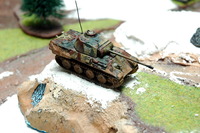 Now let’s imagine the first 6 attacks involving these forces. In such cases, this particular weapon should generate 4 hits, while this particular defender should turn aside 2 of them. So, in the end, weapon “A” succeeded in only 2 of its 6 attacks. Well, why not cut to the chase and simply say this weapon hits this defender on a roll of 1 through 2?
Now let’s imagine the first 6 attacks involving these forces. In such cases, this particular weapon should generate 4 hits, while this particular defender should turn aside 2 of them. So, in the end, weapon “A” succeeded in only 2 of its 6 attacks. Well, why not cut to the chase and simply say this weapon hits this defender on a roll of 1 through 2?
In addition, and strangely enough for a skirmish-level simulation, the system also has some difficulty modeling assaults. So that when targets aren’t destroyed at a distance the game tends to slow to a crawl as players work through some dozen extra sub-phases in order to close with the enemy.
Similarly, when artillery bombardments need up to 5 die rolls (the “range-in,” “hit,” “re-roll misses,” “save” and “firepower” attempts), in order to produce one of only three possible results (killed, bailed-out or missed), it could be said that while the rules may be clearly written, they are not terribly elegant.
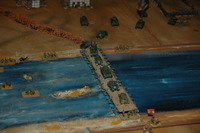 And while it may seem obvious that various sections of these rules tend to generate unneeded complexity, the first thing a grognard, or anyone who takes history seriously, will notice is what this system lacks: opportunity fire. As a result players can expect tanks, for example, to advance from one concealed position to the next without having to brave return fire over the intervening open ground. This is the old “Panzer Bush” problem from 1970 and one that I thought the hobby had outgrown decades ago.
And while it may seem obvious that various sections of these rules tend to generate unneeded complexity, the first thing a grognard, or anyone who takes history seriously, will notice is what this system lacks: opportunity fire. As a result players can expect tanks, for example, to advance from one concealed position to the next without having to brave return fire over the intervening open ground. This is the old “Panzer Bush” problem from 1970 and one that I thought the hobby had outgrown decades ago.
By the way, this is the system that contains the famous “clown car” rule. As in emergencies, even a single jeep can transport an entire platoon at no reduction in speed! That must be some emergency.
And, one final annoyance: the special ambush rule gives the strategic defender a tremendous advantage, seeing that such units act as reserves that may magically appear at practically any location or time. They can even pop up at sites previously searched and occupied by the attacker! This ability to teleport “reserves” to where they are needed has been known to turn off players to the entire system all by itself.
At the very least, then, one could conclude that Flames of War doesn’t suffer from an overreliance on historicity.
Summary
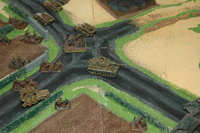 As a simulation of actual combat this system can only be given a “D” but as a light game with a World War II theme it should earn a solid “B” from those players not easily irritated by off kilter details.
As a simulation of actual combat this system can only be given a “D” but as a light game with a World War II theme it should earn a solid “B” from those players not easily irritated by off kilter details.
So which is more important to you?
Game Resources
Flames of War Quick Reference Sheet


